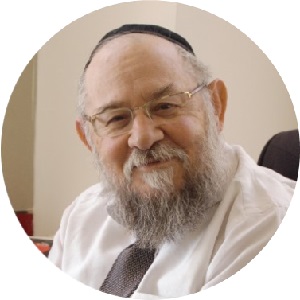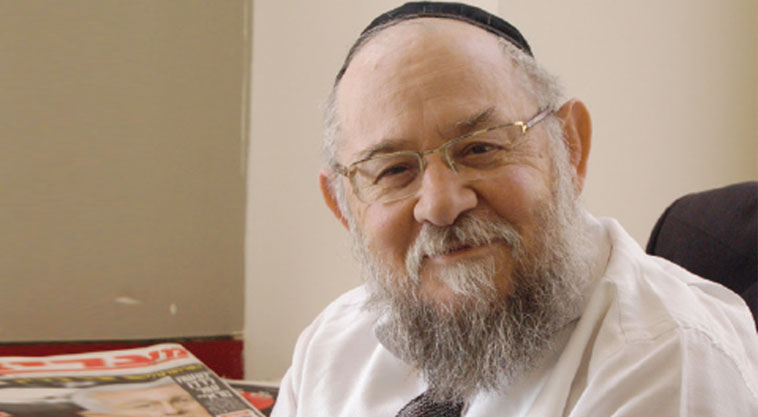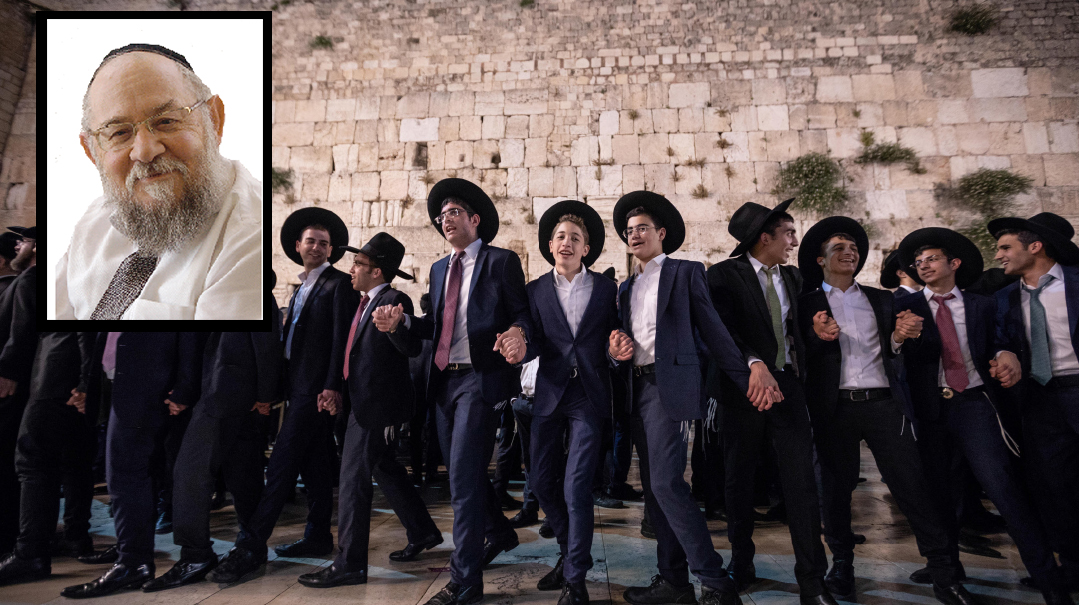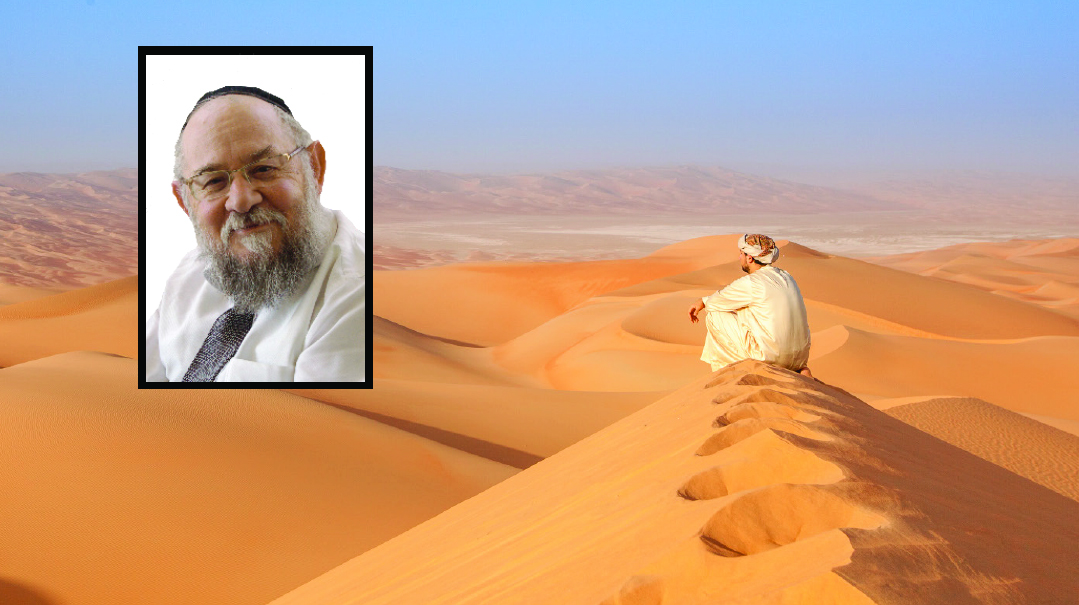Think It Through

T
he Anshei Knesses Hagedolah emerged from the tunnel of galus and saw the deeper significance of those dark times, that even amid destruction and exile, Hashem’s might and awesomeness were still revealed. That’s why they were able to give a recipe for maintaining the chain
The Anshei Knesses Hagedolah were a link in an unbroken chain; they received the Torah from the Neviim, who received it from the Elders, who received it from Yehoshua, who received it from Moshe Rabbeinu, who received it at Sinai.
They were the leaders of the nation at the time of the return to Eretz Yisrael after the Babylonian exile, and were called “the eyes of the congregation” during the period when the Second Temple was built. Among them were some of the illustrious figures in our national consciousness: the prophets Chaggai, Zechariah, and Malachi; Ezra and Nechemiah, other leaders of the generation that returned to Eretz Yisrael; Zerubavel, leader of the first aliyah several years before; Mordechai Hayehudi; and together with them, many other Jewish sages of that time, 120 men altogether.
And at this significant juncture in history stand the Anshei Knesses Hagedolah. Behind them was the destruction of the First Temple and 70 years of exile in Bavel. Before them lay the newly awakened hope of restoring Jewish sovereignty in Eretz Yisrael, and a sense of being tasked with a mission by Divine Hashgachah — to remake the nation in accordance with the Torah. But first, let us understand the import of the name Anshei Knesses Hagedolah. Wherein was the gadlus of this “Great Assembly”?
“Why,” asks Rabi Yehoshua ben Levi, “were they called Anshei Knesses Hagedolah? Because they restored the crown [of Hashem] to its former glory.” The Gemara (Yoma 69b) relates how, regarding Moshe Rabbeinu’s original statement (with which we open Shemoneh Esreh), “The great, the mighty, and the awesome G-d [hagadol, hagibor, v’hanora],” came Yirmiyahu and said, “The idolaters are destroying His Temple. Where is His awesomeness?” And so they removed the word v’hanora. Then came Daniel, and said, “The idolaters enslave His children. Where is His might?” And so they removed the word hagibor. Then came the Anshei Knesses Hagedolah, and said, “On the contrary, this is His might, that He restrains His wrath and shows patience toward the wicked. And this is His awesomeness, that if the Jews had not felt his awesomeness, they would not have been able to endure among all the nations.
The Prophet Yirmiyahu’s feelings are understandable. He beheld Jerusalem in ruins. His warnings of destruction had been fulfilled with dreadful accuracy. His beloved people were humiliated, crushed, and slaughtered. The glorious Beis Hamikdash was in flames, and those who’d been spared from the sword were now being led away into a bitter exile. Terror, darkness, and despair prevailed. With Nevuchadnetzar’s minions overrunning the city, long lines of Jews, bound in chains, were forced to march out into the desert as the smoke was still rising from the Temple Mount. Could Yirmiyahu indeed glorify Hashem with the same equanimity as before? As he cried out, “Idolaters were destroying the Temple! Where was His awesomeness?”
We can understand Daniel as well. Daniel, the great man of faith — for whom the Creator was a living reality, although He hid His face — lived through the misery of Galus Bavel. How could he in confidence perceive Hashem’s gevurah during those years of darkness? Idolaters enslaved His children. Where is His might? Not wishing to compromise his integrity and knowing that HaKadosh Baruch Hu disdains insincere prayer, Daniel omitted the description gibor.
But the Anshei Knesses Hagedolah had a fresh perspective. As the first to return to Eretz Yisrael, they could look back on the previous century with a wide-angle lens. They emerged from the dark tunnel of galus and saw the light. They were granted the privilege of setting their feet once again on the Holy Land and rebuilding the Mikdash.
When they looked back on Am Yisrael’s recent history, they saw a more comprehensive picture. They were attuned to the flow of history, and they could see the deeper significance of those dark times. The secret of Jewish survival was revealed to them. Suddenly they became aware that even amid destruction and exile, Hashem’s might and awesomeness were still revealed.
It was their ability to see things from this perspective that earned them the title of “Great Assembly.” This was their gadlus. They were able to perceive that the destructions, the holocausts, the incomparable suffering that their people had experienced, served as a background for the unparalleled miracle of their survival. And that miraculous survival was the evidence of G?d’s living presence in history. (This truth was encapsulated by the Marquis Jean-Baptiste de Boyer. When King Frederick the Great of Prussia asked him for proof, in a few words, of G?d’s existence, de Boyer replied, “Yes, Your Majesty. The Jews!”)
From their clear vantage on history, the Anshei Knesses Hagedolah restored HaKadosh Baruch Hu’s crown. They reinstituted Moshe Rabbeinu’s threefold description of Hashem as hagadol, hagibor, v’hanora. And from this same perspective, they understood the responsibility that rested on them. And therefore, they said three things:
“Be cautious in judgment [metunim badin]. Establish many talmidim. And make a safety fence around the Torah” (Pirkei Avos 1:1). In other words, lilmod, l’lameid, v’laasos (to learn, to teach, and to carry out).
Standing at that crucial point in history, they were able to put their finger on the nation’s weak point — rashness in Torah study, which resulted in a certain slacking off in mitzvah observance.
And therefore, when they came to reestablish Jewish life in Eretz Yisrael, they decided to place the main emphasis on Torah study. But note their use of the word metunim, translated here as “cautious.” Metunim implies waiting, unhurriedness. It is the opposite of extremism.
The matun doesn’t make split-second decisions, whether in learning or in life’s other situations. He contemplates, examines, and cogitates; he reads the words over and over, listens attentively to their tone and intonation. He wants to be sure he truly understands the text, the situation, the problem. He is, as Chazal express at the end of Maseches Horayos, matun u’meisik — he is not in a hurry to draw conclusions. Rashi explains, “Because he takes his time and looks thoroughly [into the matter], his conclusions are in accord with the halachah.”
The Anshei Knesses Hagedolah were not just speaking of Torah study, but of the quality of that study. The Divine Ein Sof is present in the Torah, and it cannot be revealed by a couple of quick readings. In order to understand the Torah correctly — and to act correctly in accordance with the Torah, one must dedicate himself to the intellectual effort with patience and calm.
A yeshivah bochur named Shimon, who was close to the Chazon Ish, once mailed him some chiddushim that had occurred to him in the course of his learning. He waited expectantly, hoping to receive the gadol’s comments by return mail. Weeks went by, and no answer arrived. Eventually a reply came back, saying, to the boy’s surprise, that the Chazon Ish hadn’t yet finished thinking about the points he had brought up.
Several more weeks passed, and still, no answer. The bochur asked one of the rabbanim in the yeshivah, who was close to the Chazon Ish, if he could inquire about the reason for the delay, but the answer was the same: the Chazon Ish was still thinking over the boy’s chiddushim. The rav, too, was surprised. “How much time must one spend pondering a letter of divrei Torah from a young yeshivah bochur?” he asked.
The Chazon Ish replied, “Tell Shimon that I devote some of my time every day to think about what he wrote in his letter. You ask, what is the requisite amount of time to be spent pondering such a letter? For me, the answer is, until my mind becomes fatigued from thinking about it.”
It took months before the young talmid finally received his answer from the Chazon Ish. This is what it means to be metunim badin, and this is how the Anshei Knesses Hagedolah hoped to restore the crown of Torah and to nurture generations of talmidei chachamim who would illuminate the way for all of Am Yisrael. (Originally featured in Mishpacha, Issue 711)
Oops! We could not locate your form.




